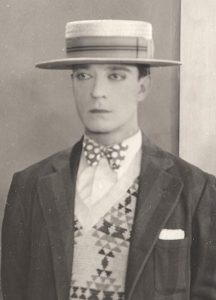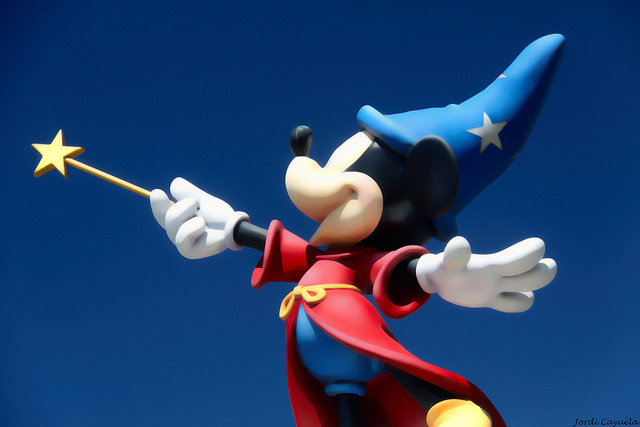Copyright law is designed to protect creators and “encourage future creativity and the development of new material which benefits us all “
( Copyright Act 2000 “Legislation,” n.d.)
In his book Free Culture, the Creative Commons pioneer and thinker Lawrence Lessig discusses the idea of creative borrowing as a fundamental principle of creativity. He also acknowledges the need to balance this with the protection individual creators and their creative and intellectual property. Both of these principles are, he argues, key to the future development of ideas and creativity.
Lessig cites the example of Walt Disney who employed this practice of creative borrowing incredibly successfully. What’s more his own work and that of his studio became hugely influential in the development of others’ work in animation and film as they mimicked and developed the Disney style and methodology. Given the topical nature of copyright law in relation to one of Disney’s most famous sons ( more of this later ), it is worth summarising the story Lessig tells:
Mickey Mouse was originally called Steamboat Willie.

He first appeared in 1928 in a silent cartoon which was something of a flop. It was only later when Walt Disney employed the synchronisation of sound and animation ( a process inspired by the first talkie, The Jazz Singer) that Mickey Mouse become truly animated and was an instant hit. However, Steamboat Willie was not an entirely original character. As Lessig points out :

‘Throughout animation’s early history, it was Disney’s invention that set the standard that others struggled to match. And quite often, Disney’s great genius, his spark of creativity, was built upon the work of others. This much is familiar. What you might not know is that 1928 also marks another important transition. In that year, a comic (as opposed to cartoon) genius created his last independently produced silent film. That genius was Buster Keaton. The film was Steamboat Bill, Jr’ (Lessig “freeculture.pdf,” n.d.)
Steamboat Willie and Steamboat Bill Jr were both based on a character from the song Steamboat Bill. What Lessig maintains is that this ‘creative borrowing’ of characters ,stories, themes and ideas was not only common practice but it was and is the very basis of creativity. In Disney’s case it is a pattern that runs through much of his and the studio’s work. The stories for which it is most famous have drawn upon the work of others, reimagining and retelling them for the Disney audience. Lessig again:
‘Indeed, the catalog of Disney work drawing upon the work of others is astonishing when set together: Snow White (1937), Fantasia (1940), Pinocchio (1940), Dumbo (1941), Bambi (1942), Song of the South (1946), Cinderella (1950), Alice in Wonderland (1951), Robin Hood (1952), Peter Pan (1953), Lady and the Tramp (1955), Mulan (1998), Sleeping Beauty (1959), 101 Dalmatians (1961), The Sword in the Stone (1963), and The Jungle Book (1967).’ Add to these Beauty and The Beast, The Lion King ( apparently based on Hamlet ) and the never ending cycle of re-makes and it is clear that Disney not only ‘ripped creativity from the culture around him, mixed that creativity with his own extraordinary talent, and then burned that mix into the soul of his culture’ ( Lessig ) but continues to do so.
Did Disney have to pay copyright ? In 1928 most work was not even copyrighted and for that which was the average term was thirty years. This meant that the work that Disney used was freely available in the public domain to anyone who wanted to use it, free of charge.
How ironic it then is that Disney’s powerful lobbying of the US Congress may result in the copyright laws being extended again in order to save Mickey Mouse from falling out of copyright. Mickey is due to fall out of copyright in 2023 which means that anyone will be able to use or reproduce his image without having to get permission from Disney or compensate them for use. As illustrated in this graph, known as The Mickey Mouse Curve (Fig.1) and taken from an insightful blog post by Steve Shlackman (Schlackman, 2017), Disney have already succeeded in getting the law changed a number of times, immediately prior to their mascot’s copyright expiring .

What right does Disney have to claim such extended protection as the creator of material which, in its essence was inspired and borrowed and in the public domain? What is being protected is not creativity but powerful commercial interests that have more to do with merchandising than artistic endeavour so that as Lessig points out, culture is no longer free but owned. In what way can this possibly encourage creativity and the development of new material which benefits us all ?
References
Lessig,L Free Culture, 2004 Penguin Press, New York Accessed from www.freeculture.pdf 4/12/17
Legislation [WWW Document], n.d. . Univ. Coll. Cork. URL http://www.ucc.ie/en/ (accessed 12.4.17).
Schlackman, S., 2017. How Mickey Mouse Keeps Changing Copyright Law. Artrepreneur. Accessed 4/12/17
